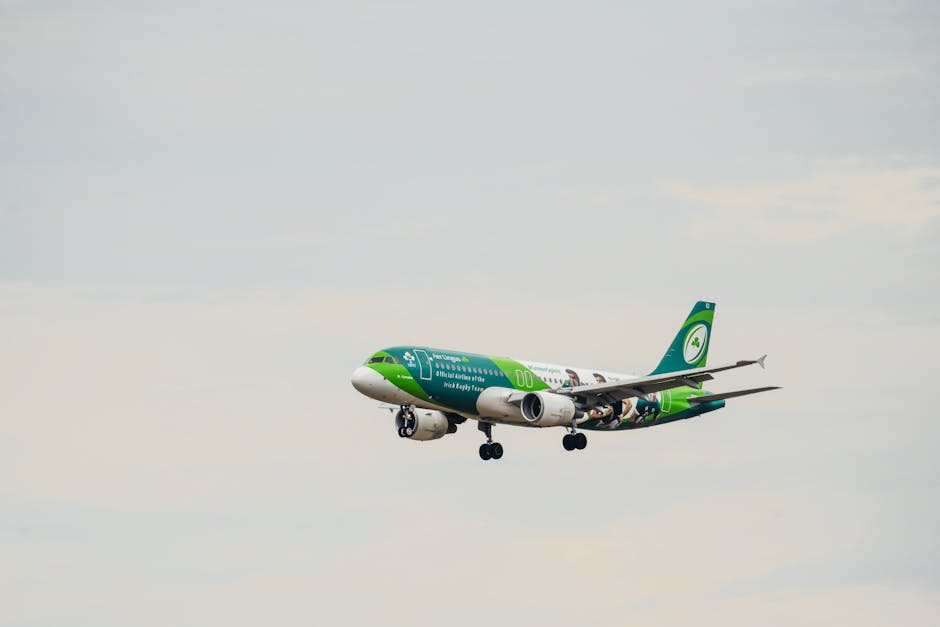Sustainable Aviation Fuels: The Future of Eco-Friendly Travel
Flying has always carried a certain magic, a sense of adventure, exploration, and connection. But let’s be honest: it also comes with a hefty environmental price tag. For decades, the aviation industry has been associated with high carbon emissions, making it one of the more challenging sectors to decarbonize. So how do we reconcile the thrill of air travel with our growing commitment to a greener planet? Enter Sustainable Aviation Fuels, or SAFs, a cleaner alternative to traditional jet fuel that's already beginning to make a difference.

What Exactly Are Sustainable Aviation Fuels?
At its core (and don't worry, we’re keeping this simple), SAFs are fuels derived from renewable resources instead of fossil fuels. Think used cooking oil, agricultural residues, municipal waste, or even algae. The magic lies in their ability to mimic the chemical composition of conventional jet fuel while significantly reducing greenhouse gas emissions over their lifecycle, sometimes by up to 80%, according to the International Air Transport Association (IATA).
Here’s an analogy: imagine replacing a gas-guzzling car engine with a hybrid one that runs on renewable electricity without sacrificing performance. That’s what SAFs aim to do for aircraft, they keep planes in the air but make
How Do They Work?
You might be wondering if airlines need entirely new engines or planes to accommodate SAFs. The answer is no. One of the most appealing aspects of these fuels is that they are “drop-in ready,” meaning they can be blended with traditional jet fuel and used in existing aircraft engines without modifications. This compatibility makes it much easier for airlines to adopt SAFs compared to other clean energy alternatives like electric or hydrogen-powered planes, which require entirely new infrastructure.
Take United Airlines as an example. In 2021, they operated a flight using 100% SAF in one of its engines, showing not just feasibility but also confidence in this technology. While most current SAF use involves blends (typically capped at around 50%) the potential for fully SAF-powered flights is becoming increasingly realistic.
The Current Challenges
Let’s not sugarcoat things: SAFs aren’t perfect. Right now, the biggest hurdle is cost. Producing SAF is significantly more expensive than refining traditional jet fuel, sometimes two to four times as much. Why? Because the processes involved in converting waste or biomass into usable fuel are still in their early stages of scaling up.
Then there’s availability. According to Air Transport Action Group (ATAG), SAF accounts for less than 0.1% of global aviation fuel consumption today. That’s like filling a swimming pool with teaspoons of water, it’s just not enough yet. Scaling production requires massive investments in infrastructure and feedstock supply chains.
But here’s where things get interesting: governments and private companies are starting to step up. The U.S., through initiatives like the Inflation Reduction Act, has introduced incentives for SAF production, while the EU has set mandates requiring airlines operating within Europe to gradually increase their use of these fuels over the next few decades.
Why It Matters
Aviation contributes around 2-3% of global CO2 emissions annually, a figure that could climb as air travel demand continues to grow. Unlike other industries where electrification is becoming a viable solution (think cars and buses), airplanes present unique challenges due to weight and energy-density requirements. Simply put, batteries capable of powering long-haul flights aren’t feasible with current technology.
This is where SAFs shine as a near-term solution. For example, Heathrow Airport reported that just switching to a 10% SAF blend across all flights could cut emissions by 600,000 metric tons per year, the equivalent of taking about 120,000 cars off the road annually.
Beyond emissions reductions, there’s also an economic angle. Investing in SAF production creates jobs in sectors like bioenergy and waste management while reducing dependence on imported fossil fuels. And let’s not overlook public sentiment; travelers are increasingly demanding greener options from airlines, making sustainability not just an ethical priority but also a competitive advantage.
The Road Ahead
So where do we go from here? Scaling up SAF adoption will require coordinated efforts across multiple fronts:
- Government Policies: Subsidies and tax incentives can help bridge the cost gap between SAFs and traditional jet fuel while encouraging private investment in new technologies.
- Airline Commitments: Major carriers like Delta, Lufthansa, and British Airways have already pledged to integrate more SAF into their operations over time.
- Technological Innovation: Continued research into more efficient production methods could dramatically lower costs and expand feedstock options.
- Consumer Awareness: Programs that allow passengers to offset their carbon footprint by funding SAF purchases could further accelerate adoption.
A useful comparison here might be renewable electricity generation: solar and wind power were once prohibitively expensive too, but widespread investment and innovation made them competitive with fossil fuels over time. The same could happen with SAFs if we maintain momentum.
| Key Factor | Potential Impact on Scaling SAF |
|---|---|
| Cost Reductions | Lowering production expenses through technological advances will make SAFs more attractive for airlines. |
| Policy Support | Incentives like subsidies or carbon taxes can level the playing field against traditional jet fuels. |
| Infrastructure Development | Building refineries and improving feedstock supply chains will ensure consistent availability. |
| Public Demand | A surge in eco-conscious travelers could pressure airlines into adopting greener practices faster. |
As you sit on your next flight watching clouds drift by your window seat, wouldn’t it feel better knowing that same plane might one day be powered by something as simple as recycled vegetable oil or agricultural waste?
This article was generated by AI